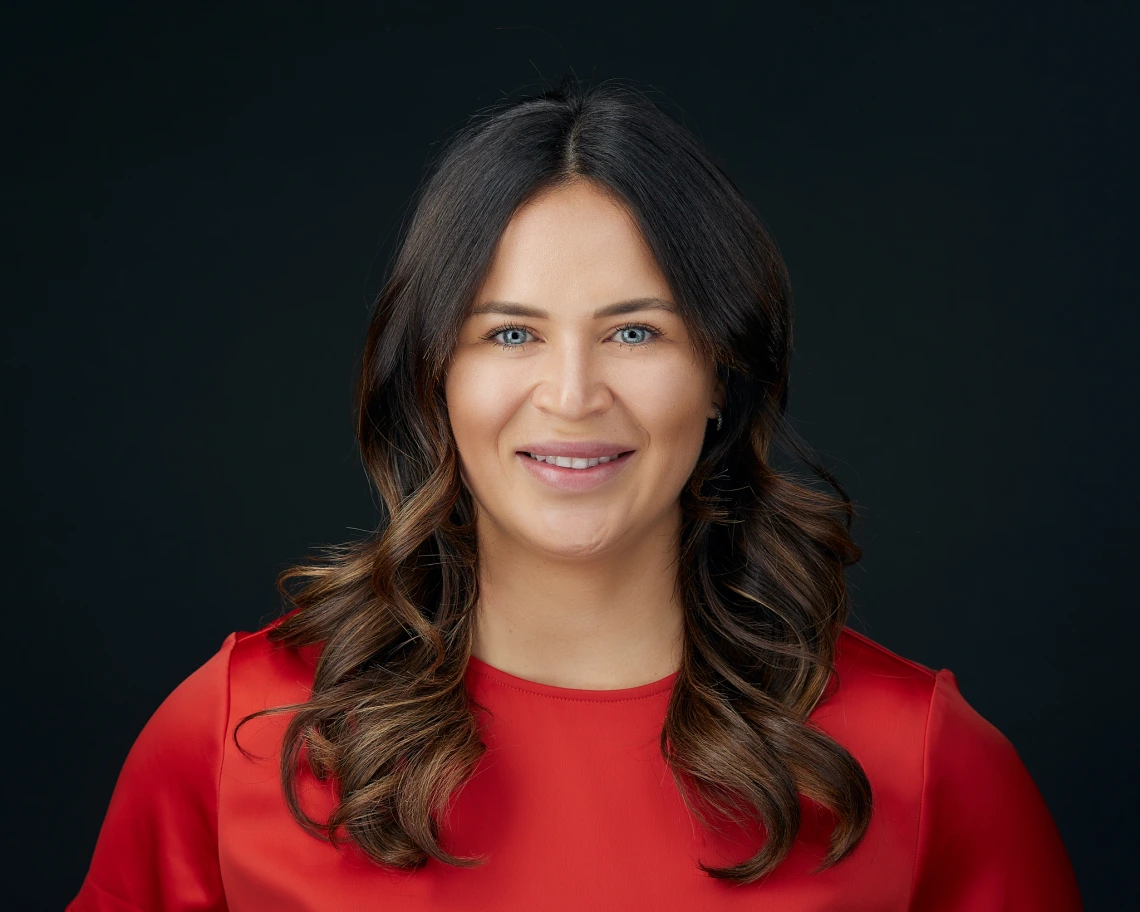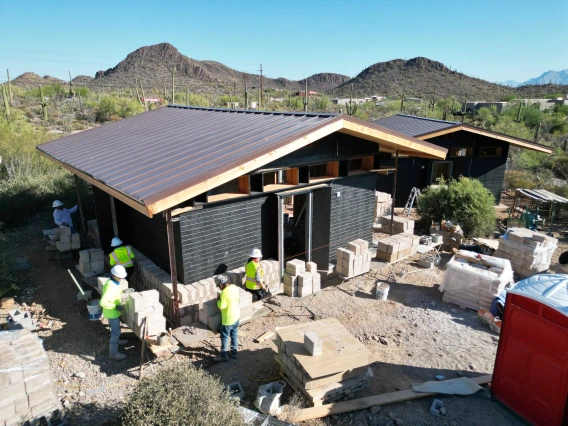Leadership in Full Bloom: Esmeralda Rubi Carrasco ‘26 MLA

Esmeralda Rubi Carrasco boasts quite the impressive resume; she is the chief operating officer at Ponderosa Cactus, serves on the Better Business Bureau board of directors for Southern Arizona, is the Arizona chapter president of the Association of Professional Landscape Designers and was featured in the Tucson Hispanic Chamber of Commerce’s Class of 2024 40 Under 40.
After getting her Doctor of Business from Grand Canyon University, she knew that a Master of Landscape Architecture would put her in the position to create the life of her dreams.
Hear from this impressive student about her journey here at CAPLA.
1. What inspired you to pursue a Master of Landscape Architecture? Was there a particular project or mentor that sparked your interest in this field?
My inspiration for pursuing a Master of Landscape Architecture is rooted in the legacy and love my parents built through Ponderosa Cactus, our family-owned garden center in Tucson. Since 1988, they’ve poured their hearts into cultivating a space that celebrates the beauty and resilience of the Sonoran Desert. I grew up watching them do so much more than sell plants—they taught customers, designed outdoor spaces and created a place where people could connect to nature and each other.
They were my first mentors. From them, I learned not just plant knowledge, but how to lead with intention, how to observe the land and how to approach design with humility and purpose. Over the years, I became deeply involved in the garden center myself—from helping customers to shaping the layout with design intent—and realized that what I loved most was curating spaces that tell stories.
Pursuing this degree wasn’t about starting over. It was about honoring everything my parents taught me and becoming professionally trained in the work I’ve grown up loving. I wanted to take what they passed down and elevate it—merging generations of hands-on knowledge with design thinking that could serve communities at a larger scale.
2. What has been the most rewarding part of your journey at CAPLA so far? What are you most proud of accomplishing in your time at college?
What’s been most rewarding is realizing how much I’ve grown—not just in skill, but in perspective. CAPLA has pushed me to think more critically, communicate more clearly and design with greater intention. It’s helped me take what I already knew from the field and reshape it through a deeper design lens.
I’m especially proud of the way I’ve brought real-world experience into academic settings and created space for collaboration across disciplines. Whether it’s helping peers understand plant selection, hosting events that connect students and professionals or simply staying grounded in the purpose behind my work—I’ve found ways to contribute meaningfully. I didn’t come here just to earn a degree. I came here to build something lasting, and I’m proud of how that’s taken shape.
3. What has been your favorite course or studio so far, and why?
My favorite course so far has been Landscape Construction with CAPLA Lecturer Wendy Lotze. It’s known as one of the more challenging courses in the program, but Wendy made the material not only digestible, but actually enjoyable. Her ability to break down complex systems and explain them with clarity and passion made all the difference.
Wendy is an incredible professor and someone I deeply admire. She took a subject that can feel intimidating and turned it into something empowering. Her guidance gave me the confidence to understand construction drawings, materials and systems—and to see construction as a vital part of the design process rather than just a technical requirement. The knowledge I gained from her course will stay with me long after graduation.
4. Have there been any faculty members who have had a big impact on you? What made them stand out?
Dr. Bo Yang has had a tremendous impact on my academic and professional journey. As his graduate research assistant, I’ve had the opportunity to work closely with him on meaningful, real-world projects that have shaped how I think about landscape architecture at both site and systems scales.
What makes Dr. Yang stand out is how deeply he believes in his students. From the beginning, he recognized the value of my experience and gave me space to grow, question and lead. He’s trusted me with responsibilities that pushed me outside of my comfort zone—and in doing so, helped me find my voice as a researcher and designer.
His mentorship has given me clarity and confidence in how I show up in this field, and I’m incredibly grateful for the trust and guidance he’s offered throughout my time at CAPLA.
5. How have you been involved in extracurricular activities or leadership roles on campus? What have you gained from these experiences?
I currently serve as the president of the American Society of Landscape Architects (ASLA) Student Chapter at the University of Arizona. In this role, I’ve focused on creating opportunities for students to connect with the profession—whether through events like Parking Day, peer mentorship or organizing meetings that bring students and faculty together in meaningful ways.
I’ve also had the opportunity to attend and represent our chapter at the ASLA National Conference, where I’ve volunteered, participated in sessions and built relationships with professionals from across the country. Being part of the national network has given me a clearer picture of where this field is going and how I want to grow within it.
Serving in this role has helped me become more confident in my voice as a leader. It’s taught me how to advocate, build community and support others while staying grounded in the values that brought me to landscape architecture in the first place.
6. What are your plans/goals for your future career? How do you hope to use your degree to make an impact after graduation?
My long-term goal is to open my own landscape architecture firm—one that reflects my values, experience and love for the Sonoran Desert. I want to create a practice rooted in sustainability, cultural relevance and plant-forward design, where landscapes are not only beautiful, but resilient, intentional and deeply connected to place.
With my background in running Ponderosa Cactus and years of hands-on horticultural experience, I bring a unique lens to design—one that bridges real-world plant knowledge with academic training. I want to use my degree to elevate how planting design is understood and implemented, especially in arid regions like Southern Arizona.
Whether I’m designing healing spaces, ecological corridors or community gathering areas, I hope to create work that supports both people and the environment—while mentoring the next generation of designers along the way.
7. What advice would you give to prospective students considering CAPLA or a Master of Landscape Architecture?
Apply yourself and don’t be afraid. It’s a challenging path, but it’s also one of the most rewarding. You will be stretched, tested and pushed to grow in ways you didn’t expect—but that growth is what makes the journey worthwhile.
Pressure is a privilege. The moments that challenge you the most are often the ones that shape you into who you’re meant to become. If you commit fully to the process, you’ll be amazed at what you’re capable of—not just as a designer, but as a leader, a thinker and a contributor to something bigger than yourself.
8. What do you think sets our college apart? How would you describe our learning environment?
What truly sets CAPLA apart is the faculty’s level of care and connection. They don’t just teach—you’re known here. Professors take the time to understand who you are, where you come from and where you’re trying to go. They see your potential even when you’re still figuring it out yourself, and they go above and beyond to support your growth.
The learning environment is both rigorous and personal. You’re challenged to push your limits creatively and technically, but you’re never doing it alone. It’s a place where students are encouraged to explore their own paths and supported by a faculty who genuinely want you to succeed—not just in school, but in life and in practice.
9. Is there anything else you'd like to share about your personal story or what being a student in our college means to you?
Being a student at CAPLA has reminded me that it’s possible to hold multiple identities at once—business owner, student, designer, leader—and still find belonging. It’s shown me that I don’t have to choose between my past experience and my future goals. Instead, I’ve been encouraged to bring it all to the table.
This journey hasn’t been about reinventing myself—it’s been about refining what was already there. CAPLA gave me the space to sharpen my voice, expand my thinking and connect with others who care deeply about making meaningful change through design. That’s something I’ll always be grateful for.



